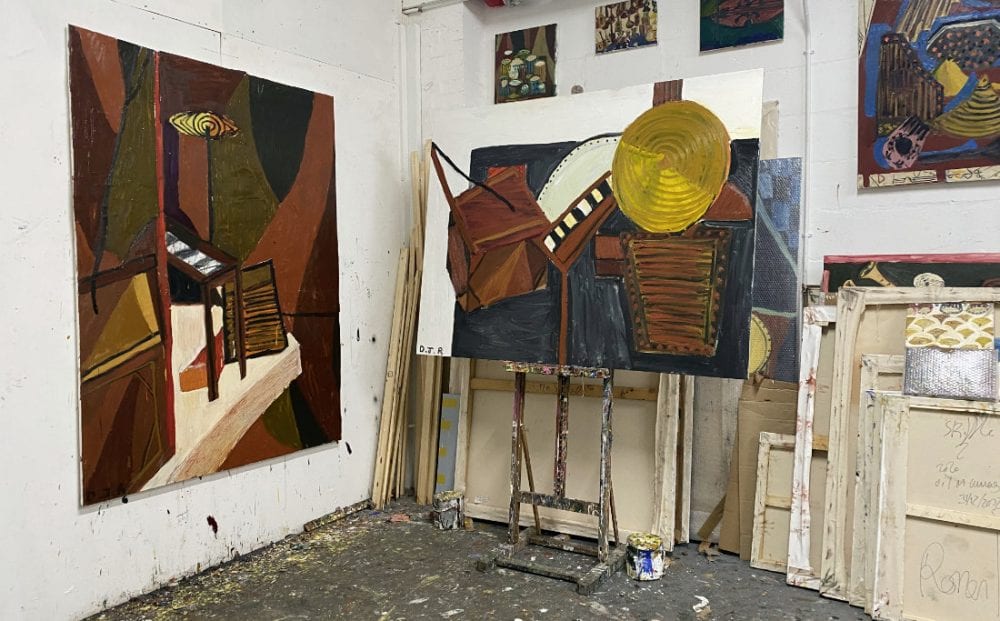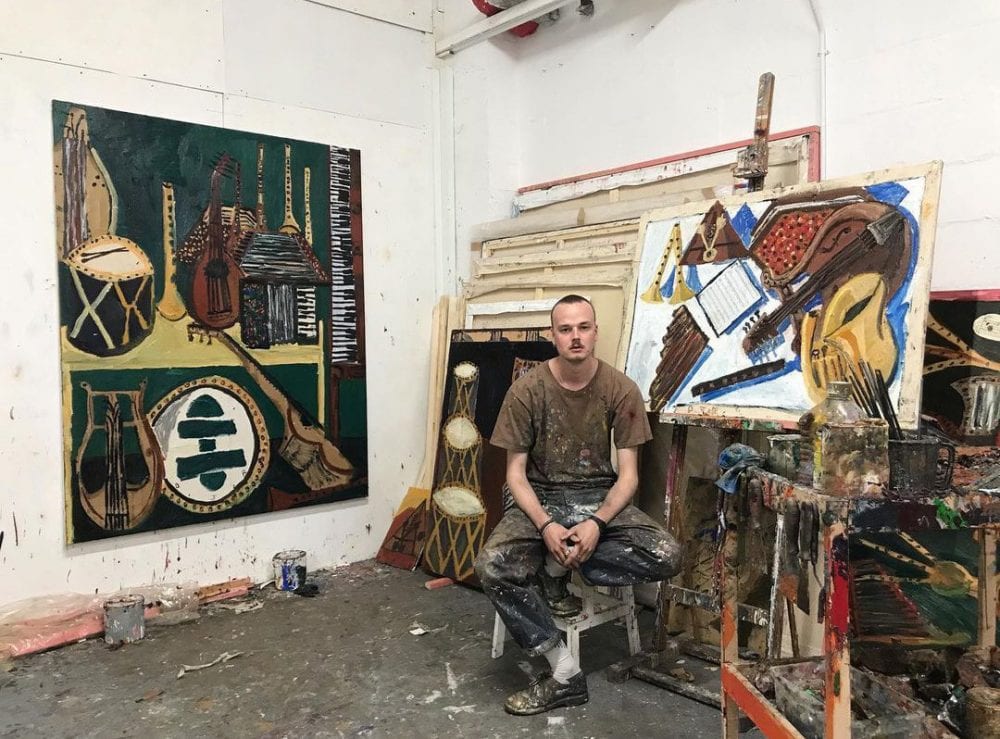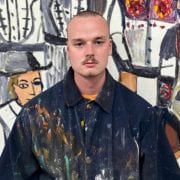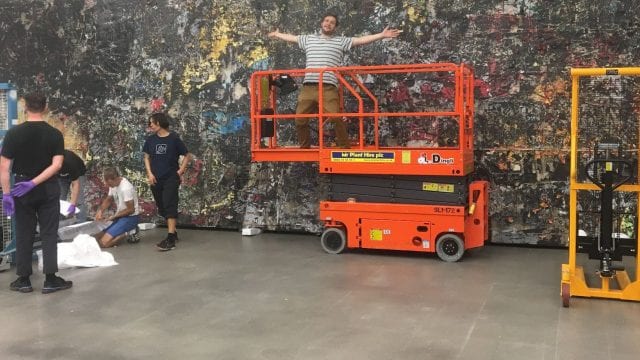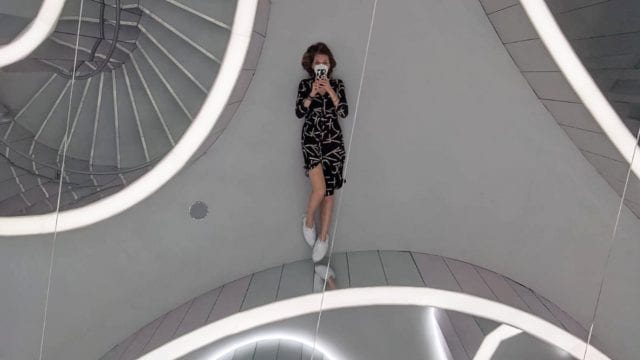Danny Romeril was born in Jersey, where he completed a foundation diploma at Highlands College, before moving to London to study Fine Art at Central Saint Martins. He’s had solo exhibitions at Fort Regent Gallery, New Art Projects, Galerie Thomas Fuchs and Setareh X (with Florence Hutchings). He recently completed a residency at the La Brea Studio in Los Angeles. Danny’s paintings primarily feature musical instruments.
Jersey – what comes to your mind?
I was born in Jersey and lived there until I was 19, then I moved to London in 2016. My relationship with Jersey is a lot different now but I still think of summer holidays, swimming in the sea, seeing family, good pints, and good pubs.
What is your most memorable experience or accomplishment?
Having my first solo show in London in 2019 at New Arts Projects. It was called One Hit Wonder, a joke because it was my first. When that opened, I was in LA at the La Brea studio residency, where my partner and I spent five weeks. We had a huge studio; we painted and got really sunburnt. It was fantastic. I also had two shows in Germany. It’s hard to pick one thing because I’ve been very lucky so far.
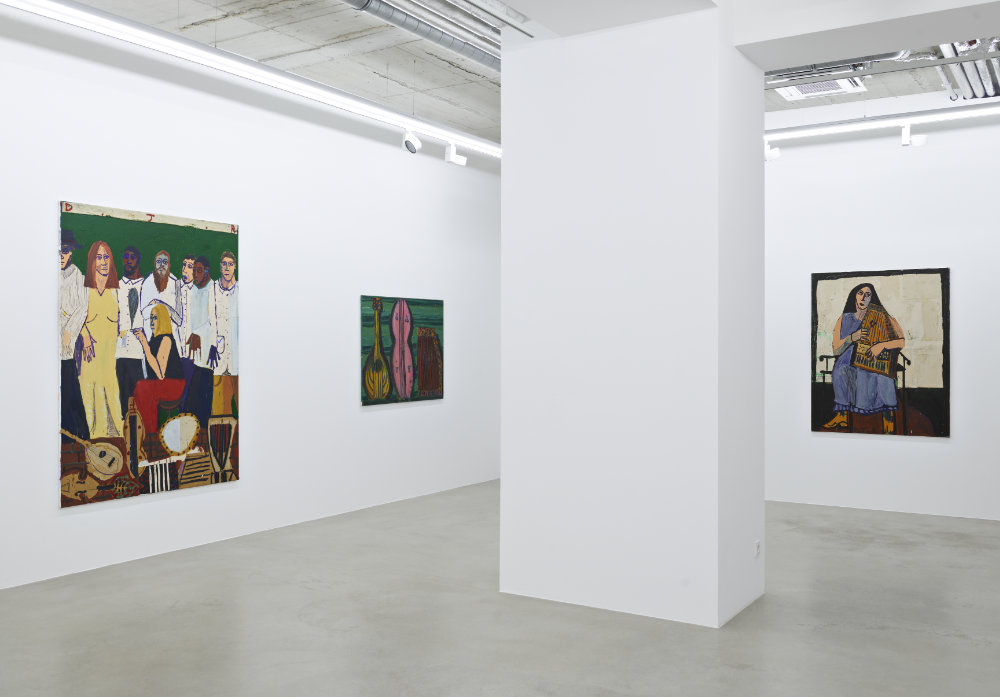
If you could own any artwork, what would it be?
This is hard because there are a few. I’ve always loved Les Demoiselles d’Avignon by Picasso. It’s so important in the history of painting. When I first moved to London, I thought he was all right; but now he has become one of my favourite artists. It was the same with Bonnard. My partner has been a really big fan of Bonnard, but they weren’t my favourite paintings. Then Bonnard’s show at Tate was a knockout, but what really cemented it was his painting at the MET called The Terrace at Vernonnet. That’s the painting I’ll pick. Or a Philip Guston; anything by him and I’d be happy.
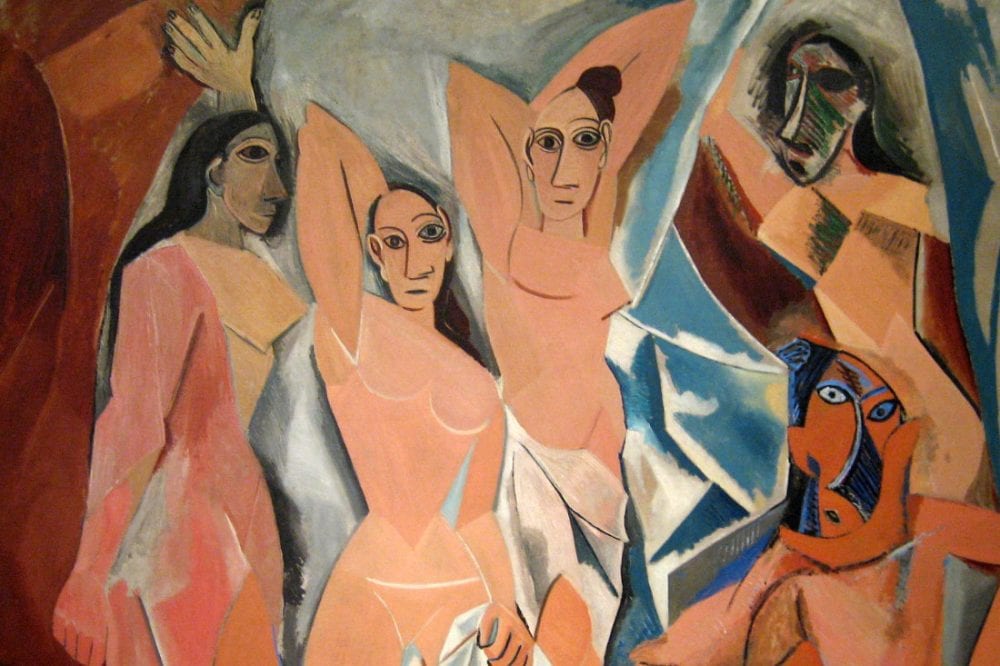
Photo © Wally Gobetz
If there were a movie about your life, what would be the name of the movie and which actor would play you?
My dad chose Benedict Cumberbatch, and I was tempted to do the same because I look a bit like my dad. I’ve been told I look like Tilda Swinton, so maybe she could play me. If it’s set when I’m old, it should be Willem Defoe. But I think I’m going for Henry Cavill – to make me totally disproportional and super handsome. It will be called ‘Painting Music.’
What do you think is the best way to connect with or experience art?
I think in person, especially for painting, because the way things are painted is so important. You can only get so much from a screen or in a book. As soon as the National Gallery opens, I’m going straight there. We’ve got loads of art books, so I’m not starved of images; but it’s just not the same.
Do you feel not having access to art and other people’s creative output has affected your output?
I share a studio with my partner, so I always have someone to bounce off of. I’ve been lucky in the sense that I’ve missed the wider community, but I’ve had someone in my bubble. Not having the distractions of going to private views and bumping into people has been hard. I’m either at home or in the studio.
Tell me about your working process. How do you know when an artwork is finished?
I’ve been painting music for two or three years now, so I know how to paint all the instruments. I was bored with painting the same ones, so I bought an Encyclopaedia of World Instruments to find new inspiration. Or I’ll look at things like the Philip Guston Trash Pile paintings and think, ‘What if I did that with instruments?’
Sometimes I do preparatory sketches, and sometimes I go straight onto the canvas. It’s such a varied process, and not having a set way of working means I never get too bored. I have to paint the whole thing all at once though because I’m so impatient. I put big blocks of paint over each other with big brushes, attack them and then try to work things out.
I never fine-tune something later, and I never fiddle. I tend to leave paintings when I really hate them, because, annoyingly enough, they tend to be my favourite paintings six months later.
I love painting over old paintings because you get all this stuff underneath that you have to fight against. It’s more interesting for me because if you look at them really carefully you can see the outlines in the background. Sometimes I just leave bits of what’s underneath, so it’s halfway between two paintings. But I can’t do it all the time, because I’d never have any work.
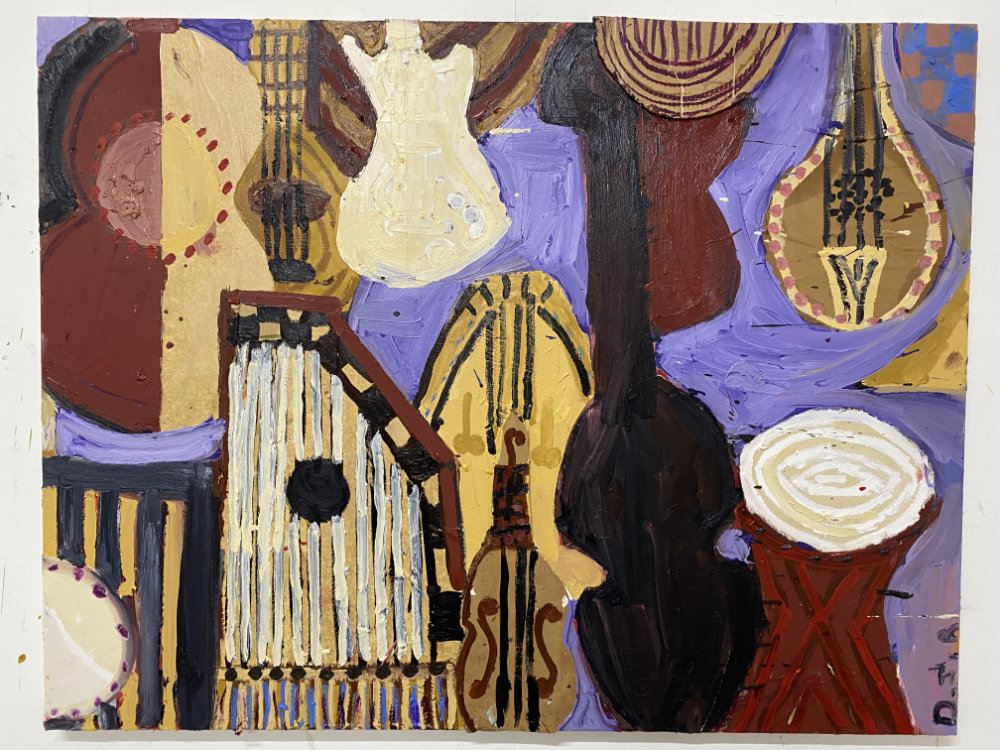
Can you say you like your own work?
I really struggle to say I like my own work. If you like your own work too much, you can become a self-repeating circle. I’m very critical and brutal about my work. There’s a big painting in my studio, big enough that it’s a pain to handle. I keep thinking I’ll paint over it, but I can’t bring myself to do it. I think it wants to stay. I remember struggling and having a real battle with the painting, making really drastic changes, and now I can’t bring myself to do anything mean to it. I feel like the paintings have personalities; there are ones I dislike, but it’s more rewarding if it’s harder and more emotionally draining.
Tell us a bit about your studio.
It’s in the middle of an industrial estate in South-East London, down by the river. You can’t see the floor anymore because everything is covered in paint. I can’t wear nice clothes. I have nice clothes I wear out, for doing things with friends. Then I have clothes I wear to the studio – sort of scruffy but not too scruffy. But my ‘studio clothes,’ are filthy: rock-solid t-shirts that would blow up if I lit a cigarette. I share my studio with my partner, who is also really messy, so it’s pretty catastrophic but fun. Being an artist, I have free reign to be as messy as I want, and nobody can tell me off.
